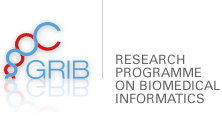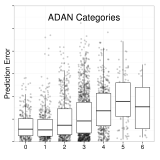
10/12/2015
Thesis defence of Pau Carrió on Friday the 11th of December "Development of advanced strategies for the prediction of toxicity endpoints in drug development"
Next friday, 11th of December at 10:00, Pau Carrió, member of the PharmacoInformatics group of GRIB will defense his thesis "Development of advanced strategies for the prediction of toxicity endpoints in drug development" at room 473.10 at PRBB. You are all invited to this event.
Abstract:
Safety concerns are one of the main causes of drug attrition. In these events, the moment at which the drug toxic effects are discovered changes dramatically the importance of the finding; discarding a valuable candidate at clinical testing stages means wasting years of efforts and huge economic investments. Even more dramatic is the discovery of toxic effect at post marketing stages, when the drug could have already produced severe side effects on a number of patients.
For these reason there is a pushing need of developing methods able to assess the safety of drug candidates at early stages of development. Among these, in silico methods have many advantages, like not even requiring the availability of the compound, not wasting any quantity of it in case it has been already synthesized, being fast, cheap and make no use of animal testing. Unfortunately, in silico prediction methods of toxicity endpoints do not perform always as expected. The reasons are still under debate, but likely reasons are the complexity of the biological phenomena under study and the large structural diversity of the drug candidates, among others.
The aim of this thesis is to improve currently used in silico prediction methods for their application to biological endpoints of interest in drug development, with a special emphasis to toxicological endpoints. Here, we report a novel general methodology called ADAN (Applicability Domain Analysis) for assessing the reliability of drug property predictions obtained by in silico methods. Furthermore, we proposed a unifying strategy for the use of in silico predictive methods in this field, defining rational criteria for the application of a whole spectrum of methods; from structural alerts to global QSAR models, including read across and local models. The usefulness of all the proposed methodologies is tested using a systematic analysis on representative datasets, obtaining good results that confirm their validity.



